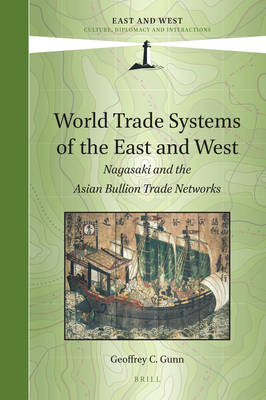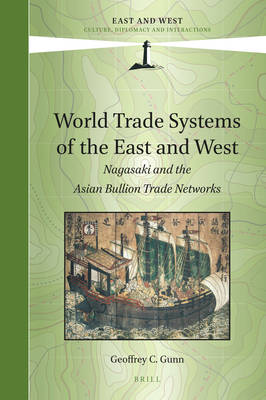
- Afhalen na 1 uur in een winkel met voorraad
- Gratis thuislevering in België vanaf € 30
- Ruim aanbod met 7 miljoen producten
- Afhalen na 1 uur in een winkel met voorraad
- Gratis thuislevering in België vanaf € 30
- Ruim aanbod met 7 miljoen producten
Zoeken
World Trade Systems of the East and West
Nagasaki and the Asian Bullion Trade Networks
Geoffrey C Gunn
€ 229,45
+ 458 punten
Omschrijving
In World Trade Systems of the East and West, Geoffrey C. Gunn profiles Nagasaki's historic role in mediating the Japanese bullion trade, especially silver exchanged against Chinese and Vietnamese silk. Founded in 1571 as the terminal port of the Portuguese Macau ships, Nagasaki served as Japan's window to the world over long time and with the East-West trade carried on by the Dutch and, with even more vigor, by the Chinese junk trade. While the final expulsion of the Portuguese in 1646 characteristically defines the "closed" period of early modern Japanese history, the real trade seclusion policy, this work argues, only came into place one century later when the Shogunate firmly grasped the true impact of the bullion trade upon the national economy.
Specificaties
Betrokkenen
- Auteur(s):
- Uitgeverij:
Inhoud
- Aantal bladzijden:
- 340
- Taal:
- Engels
- Reeks:
- Reeksnummer:
- nr. 2
Eigenschappen
- Productcode (EAN):
- 9789004358553
- Verschijningsdatum:
- 1/12/2017
- Uitvoering:
- Hardcover
- Formaat:
- Genaaid
- Afmetingen:
- 160 mm x 239 mm
- Gewicht:
- 589 g

Alleen bij Standaard Boekhandel
+ 458 punten op je klantenkaart van Standaard Boekhandel
Beoordelingen
We publiceren alleen reviews die voldoen aan de voorwaarden voor reviews. Bekijk onze voorwaarden voor reviews.








